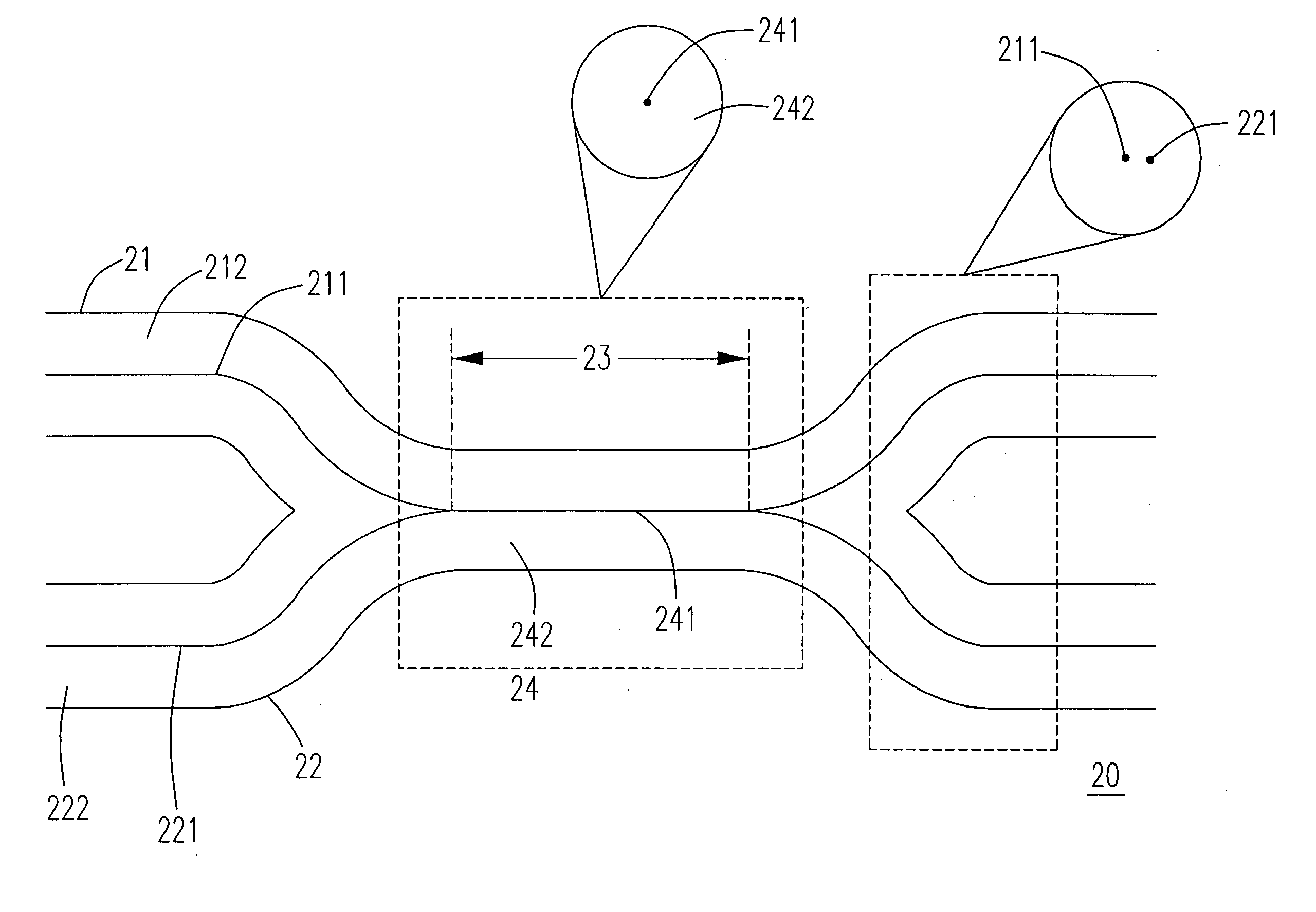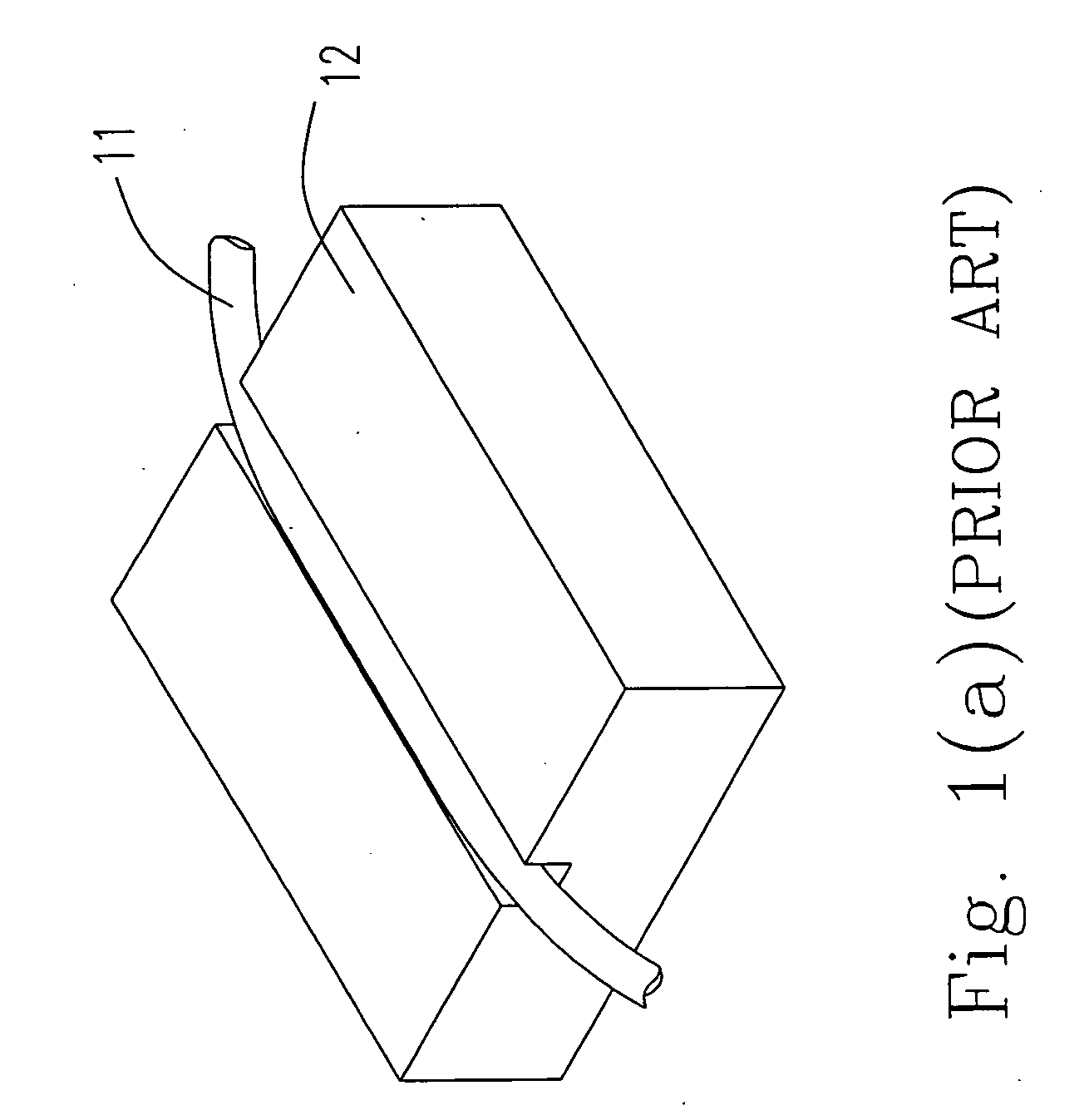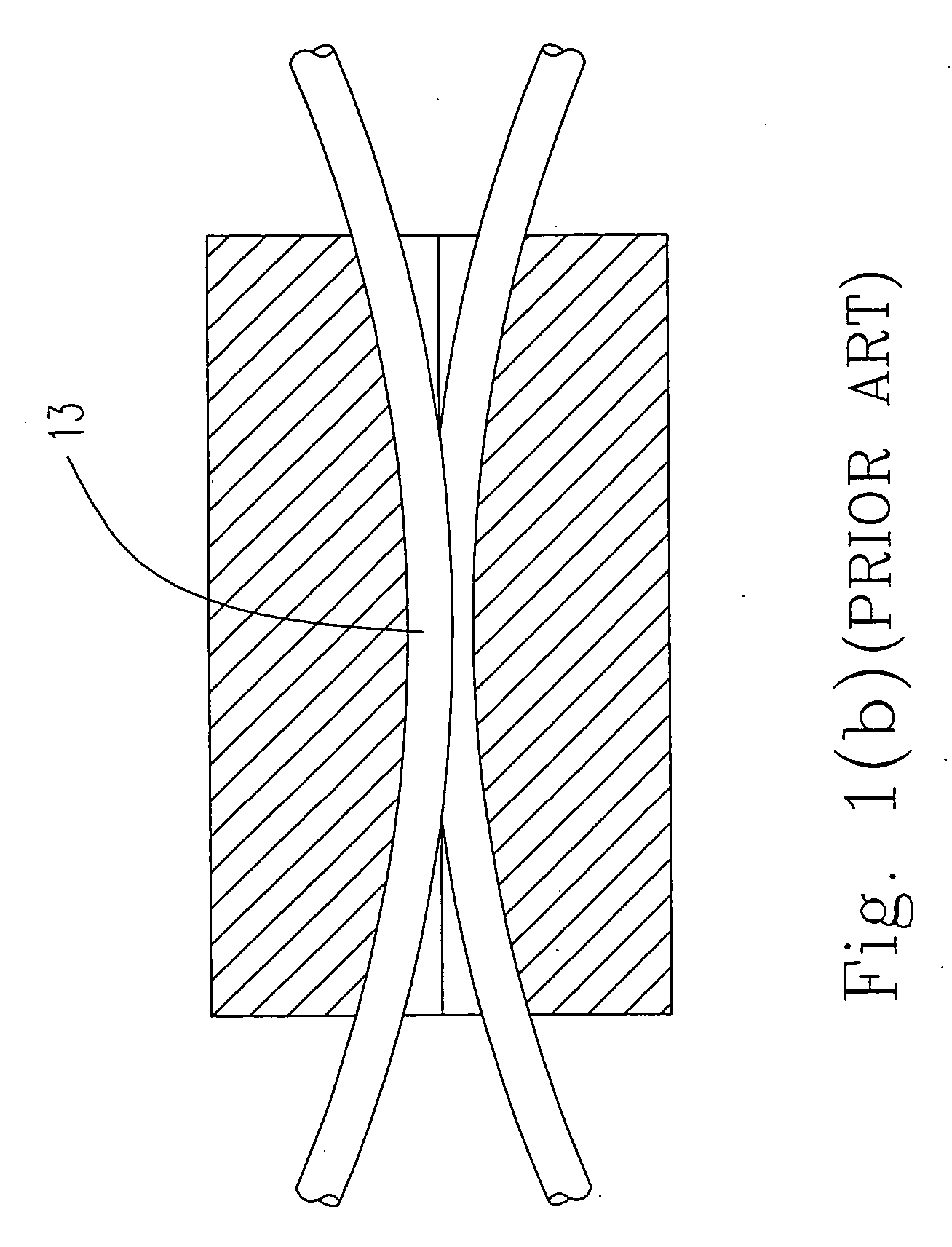Laser-ablated fiber devices and method of manufacturing the same
a laser-ablated fiber and fiber technology, applied in the direction of manufacturing tools, instruments, optical elements, etc., can solve the problems of no commercial value, low stability of fiber couplers with respect to the environment, fatal shortcoming, etc., and achieve the effect of avoiding light loss and avoiding light loss
- Summary
- Abstract
- Description
- Claims
- Application Information
AI Technical Summary
Benefits of technology
Problems solved by technology
Method used
Image
Examples
Embodiment Construction
[0025] The present invention proposes a method for manufacturing laser-ablated fiber devices for different applications and will now be described more specifically with reference to the following embodiments. It is to be noted that the following descriptions of preferred embodiments of this invention are presented herein for purposes of illustration and description only; it is not intended to be exhaustive or to be limited to the precise form disclosed.
[0026] Please refer to FIG. 2, which is a schematic diagram showing the structure of the fiber coupler according to a preferred embodiment of the present invention. The method for manufacturing the fiber coupler 20 in FIG. 2 includes the following steps. Firstly, the fiber 21 and 22 are prepared, wherein the fiber 21 comprises the core 211 and the cladding 212, and the fiber 22 comprises the core 221 and the cladding 222. Next, a laser beam is utilized to respectively ablate the claddings 212 and 222 to form two evanescent field surf...
PUM
| Property | Measurement | Unit |
|---|---|---|
| evanescent field | aaaaa | aaaaa |
| depth | aaaaa | aaaaa |
| distance | aaaaa | aaaaa |
Abstract
Description
Claims
Application Information
 Login to View More
Login to View More - R&D
- Intellectual Property
- Life Sciences
- Materials
- Tech Scout
- Unparalleled Data Quality
- Higher Quality Content
- 60% Fewer Hallucinations
Browse by: Latest US Patents, China's latest patents, Technical Efficacy Thesaurus, Application Domain, Technology Topic, Popular Technical Reports.
© 2025 PatSnap. All rights reserved.Legal|Privacy policy|Modern Slavery Act Transparency Statement|Sitemap|About US| Contact US: help@patsnap.com



